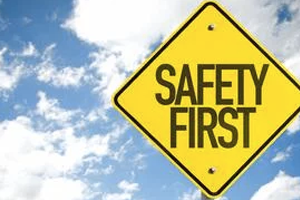One of the most important factors of running a business effectively is keeping employees healthy and safe. Safety Lessons Learned is a series designed to provide examples of workplace accidents that result in injury or even death to help employers recognize hazards and put the proper preventative measures in place (names have been changed to ensure confidentiality).
Tree Cutter Lands in Intensive Care After Fall
Michael works for Green Tree Landscaping Service in Boca Raton, Florida. He was cutting trees about 20 feet off the ground when he fell off his ladder. Turns out his ladder was set in the bushes, instead of on the ground. Michael ended up with a severe head injury and spent weeks in the ICU. He also suffered broken arms and knees. If Michael had placed his ladder on a stable surface, or had the proper training, he might not have fallen.
Safety Lesson:
Employers should be sure to train employees on proper ladder safety, including the following:
- Make sure that ladders are positioned at the required angle, using the 4-to-1 Rule: For every 4 feet (1.2 meters) up, place the base of the ladder 1 foot (0.3 meters) from the wall or upper support it rests against.
- Maintain three-point contact - one hand and two feet, or two hands and one foot.
- Use a tool belt, backpack, hoist, lift, or ropes to carry tools and equipment, so your hands are free to grip your ladder.
Nursing Home Worker Strains Back While Lifting Resident
Jennifer works at Northern Lights Nursing Home in Battle Creek, Michigan. She needs to help a patient to the restroom, but doesn't feel like hooking up the mechanical lift. She struggles to help him out of bed, and strains her back. Over time, Jennifer ends up with a serious spinal injury that requires surgery. She might have been able to avoid that surgery if she'd utilized the lift equipment provided.
Safety Lesson:
An effective safe lifting program should include:
- Mechanical lifting equipment
- Worker training on the use of the lifts
- Written resident lifting policy
Click here for a more comprehensive strategy for preventing back injuries.
Distracted Woman Severs Finger While Cleaning Machines
Amanda works for Big Machinery Cleaning in Denver, Colorado. Her coworkers had noticed she wasn't in a good mood. She'd had a fight with her sister before work. Amanda was on a ladder cleaning the higher points of a rock tumbler when her mind wandered back to the argument. The next thing she knew, her glove was caught in the machine. She managed to free her hand, but quickly realized her thumb had been partially cut off. Even though she was distracted, her company received an OSHA violation because the machine wasn't locked out for the cleaning process.
Safety Lesson:
Employers must specify the sequence in which lock out, tag out (LO/TO) control should be applied, and document the details of their LO/TO procedures and training programs for each specific machine. That process looks something like this:
- Prepare for shutdown
- Shut the machine down
- Isolate the machine from its energy source
- Affix a LO/TO device
- Deal with stored or residual energy while LO/TO
- Verify the machine's LO/TO
Five Ways to Create a Safety Culture in Your Workplace
- Focus more on coaching and less on rules.
- Do not succumb to organizational complacency.
- Engage workers in meaningful safety conversations.
- Let integrity lead your workforce. Do things right no matter who is watching.
- Teach employees how to do their jobs correctly and then hold them to a high standard






